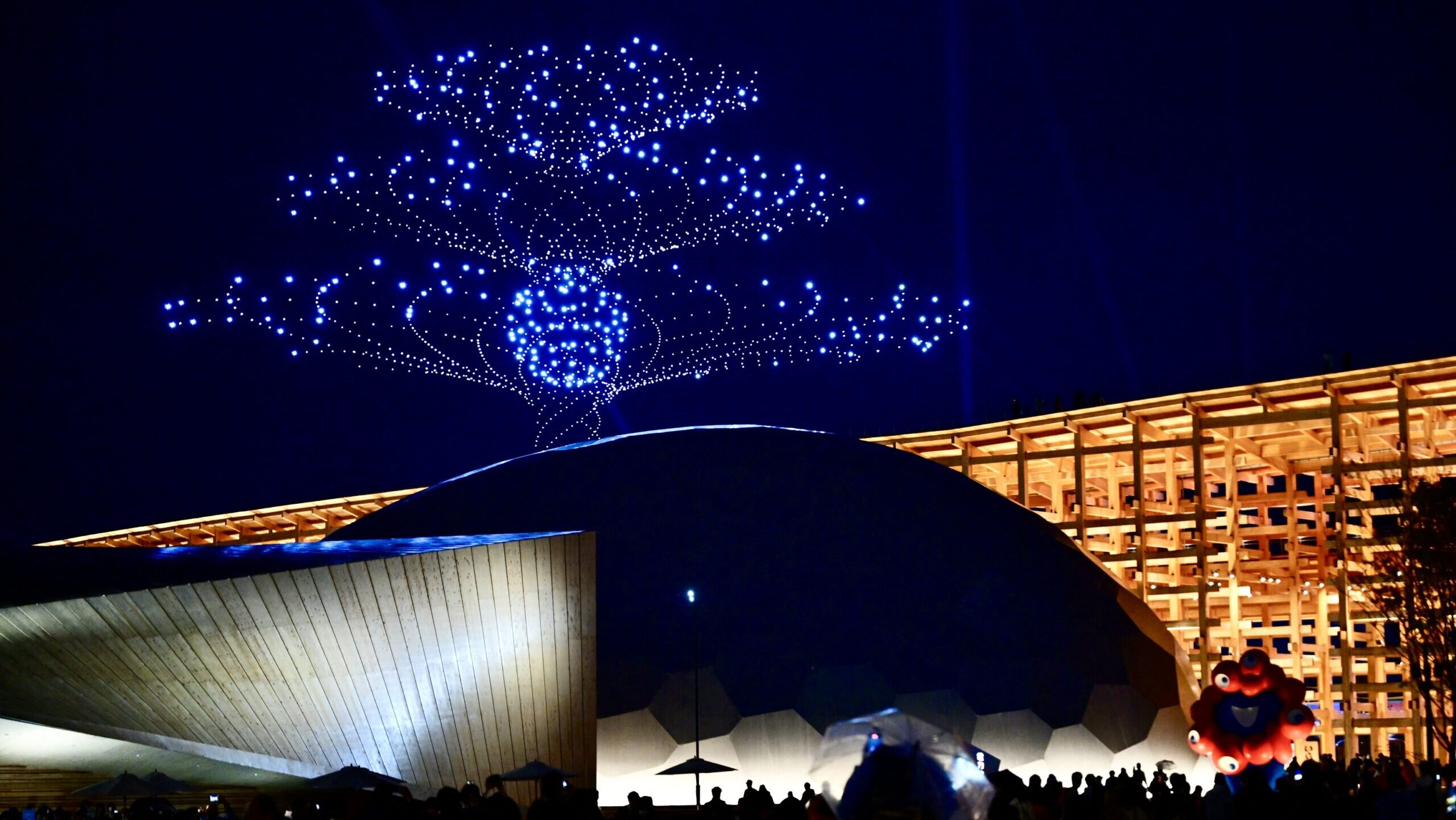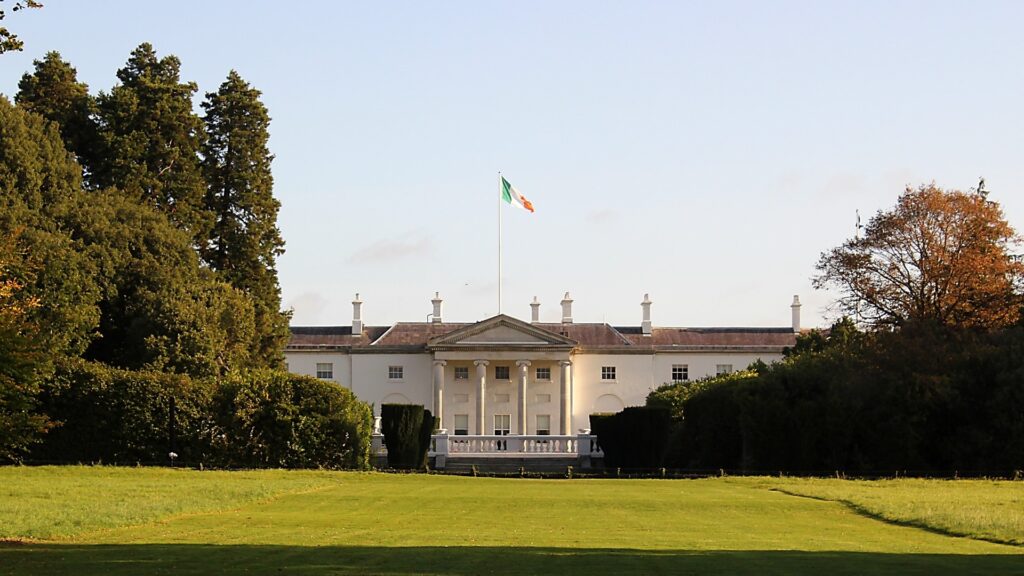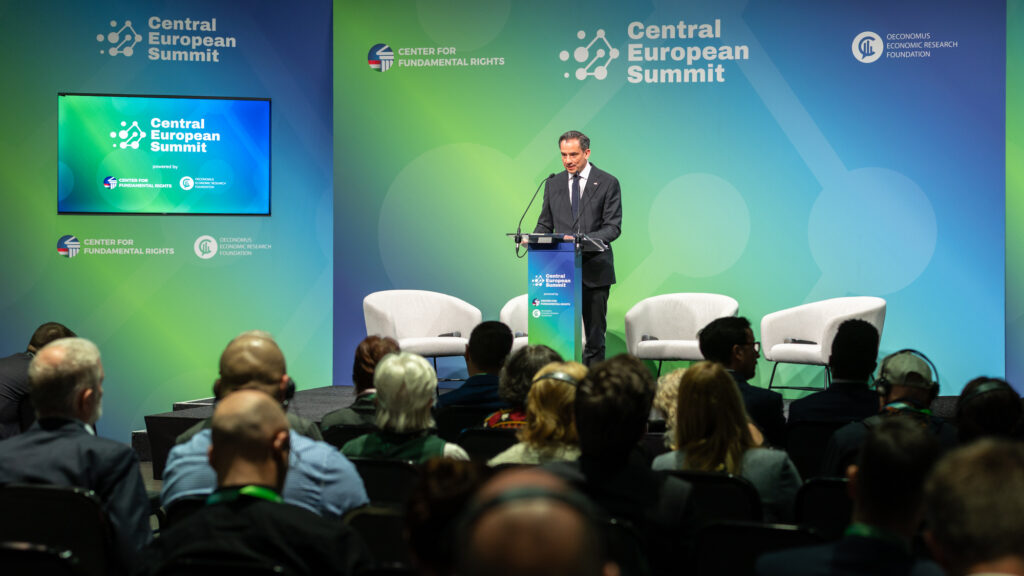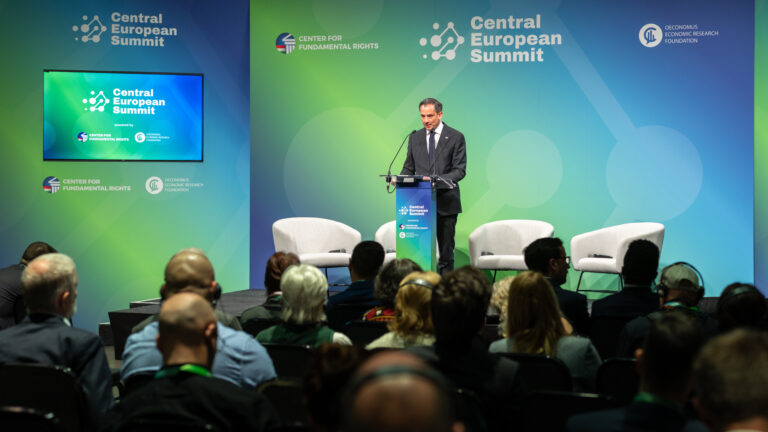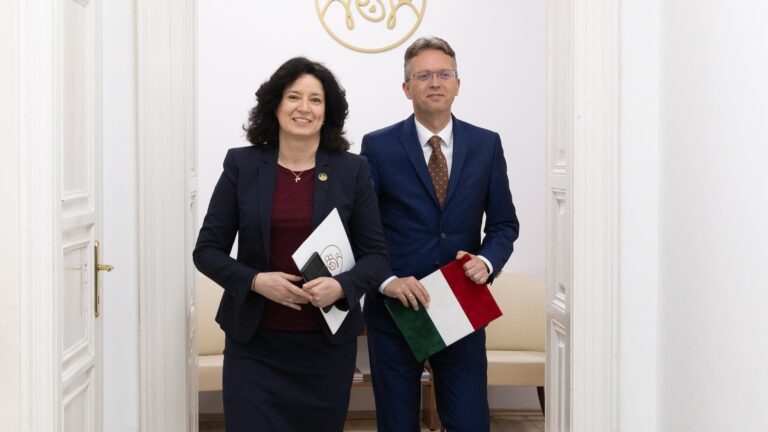On 13 April, Hungarian Minister for National Economy Márton Nagy officially inaugurated the Hungarian Pavilion at the 2025 Osaka World Expo. The event—which will see the participation of some 160 countries—is expected to attract more than 28 million visitors over six months, primarily from the East Asian region.
‘The Osaka Expo is one of the world’s most influential cultural, tourism, and economic events, offering a unique opportunity for diplomacy and economic development,’ Márton Nagy highlighted during the official opening of the Hungarian Pavilion on Sunday. ‘The World Expo is an extraordinary platform for nations to showcase their culture, economic strength, innovation, and vision for the future,’ the minister stated.
euatexpo on X (formerly Twitter): “Hungary Awaits You! 🇭🇺The #HungarianPavilion at Expo 2025 Osaka brings the past and future together through the universal language of music. Experience live performances, cultural heritage, and a deep connection to nature.👉 https://t.co/JCva0gcJm0#EUatExpo #EXPO2025 pic.twitter.com/A7fEIaDpVo / X”
Hungary Awaits You! 🇭🇺The #HungarianPavilion at Expo 2025 Osaka brings the past and future together through the universal language of music. Experience live performances, cultural heritage, and a deep connection to nature.👉 https://t.co/JCva0gcJm0#EUatExpo #EXPO2025 pic.twitter.com/A7fEIaDpVo
Referring to the significance of the participating countries, he underlined that the exhibition holds strategic importance from a national economic perspective. Nagy noted that Hungary was among the first countries to receive construction permits for its presence at the World Expo, and the Hungarian Pavilion was also among the first to be completed—in less than a year. This exceptional achievement, he said, was the result of the coordinated, high-level professional cooperation between Hungarian and Japanese contractors.
The Japanese minister responsible for the Expo was the first to visit the Hungarian Pavilion—thereby honouring not only the pavilion itself but the entire country. The Japanese side spoke highly of the professionals and partner companies involved in the project.
A Boost Shot for Tourism
Hungary’s participation may give fresh impetus to the country’s tourism sector, which accounts for nearly 13 per cent of GDP and reached a historic peak last year: over 18 million visitors spent a total of 44 million guest nights in Hungary. Annual passenger traffic at Budapest Airport exceeded 17.6 million. ‘All this indicates that Hungary is an attractive destination,’ the minister pointed out. The pavilion aims to inspire a desire to travel among East Asian visitors, as this region represents one of Hungary’s most dynamically growing tourism source markets.
The number of tourists from the region has grown significantly: in 2024, arrivals from China doubled, from South Korea increased by 8 per cent, and from Japan rose by 44 per cent compared to the previous year.
‘The pavilion aims to inspire a desire to travel among East Asian visitors’
Data for the first quarter of 2025 confirms the positive trend: total tourist traffic from the region grew by 40 per cent, the number of Japanese guests by 36 per cent, and the number of guest nights they spent in Hungary by 14 per cent year-on-year.
The minister underlined that Japan is one of Hungary’s most significant strategic, political, and economic partners. More than 180 Japanese companies operate in Hungary, providing a livelihood for some 30,000 Hungarian families. According to Nagy, discussions have been held with several government officials on strengthening business and economic ties—developments that could elevate the 156-year-old bilateral relationship to a new level.
Discover Hungary in Osaka
‘The Hungarian Pavilion opens the door to discovering Hungary,’ said Nagy. The façade of the pavilion, covered with more than 35,000 textile lamellae evoking the motion of tree leaves, creates a nature-inspired experience. The minister stated that this perfectly reflects the Hungarian nation’s creative mindset and technological sophistication.
Gábor Zoboki, the architect behind the pavilion’s concept, explained that the three-storey building is centred around the Dome—which resembles a haystack from the outside and functions as a theatre space. Natural building materials played a dominant role in its construction. Among the project’s key contributors, he named director and choreographer Bence Vági, creative expert László Ördögh, concept designer Dávid Drozsnyik, culinary curator Balázs Csapody, and costume designer Boglárka Bódis.
japan-architects on X (formerly Twitter): "【大阪・関西万博】ハンガリー・パビリオン / Hungary Pavilionエントランスの先にはハンガリーの草原を思わせる緑豊かな空間に日本とハンガリーの文化的共通点が反映される。没入型ドームシアターでライブパフォーマンス。2階ではハンガリー料理をビストロスタイルで楽しめる#EXPO2025 pic.twitter.com/ov2KJQFfU5 / X"
【大阪・関西万博】ハンガリー・パビリオン / Hungary Pavilionエントランスの先にはハンガリーの草原を思わせる緑豊かな空間に日本とハンガリーの文化的共通点が反映される。没入型ドームシアターでライブパフォーマンス。2階ではハンガリー料理をビストロスタイルで楽しめる#EXPO2025 pic.twitter.com/ov2KJQFfU5
Throughout the six months of the Osaka World Expo, Hungarian folk singers will perform daily—singing and teaching in 15-minute intervals. The culinary offering is inspired by rural Hungarian traditions, peasant culture, and national heritage. Visitors can sample dishes such as goulash soup, Hortobágy-style pancakes, paprika potatoes, cottage cheese dumplings, and Somló sponge cake. The pavilion also features a wine bar serving the finest regional wines, spritzers, and homemade syrups. The Hungarian mascot, Miska—based on the traditional Miska jug—symbolizes hospitality and the importance of community.
Osaka is one of the most significant cities in the history of World Expos. The first such event held there took place in 1970, making Japan the first Asian country to host a World Expo. It also played a key role in Japan’s rise to economic power in the second half of the 20th century. Since then, World Expos have increasingly focused on technological innovation and sustainable development, while remaining key platforms for the representation of national cultures. The Osaka 2025 Expo continues this long-standing tradition—offering a new opportunity to deepen international cooperation and to engage in shared reflection on the future of society.
Related articles:

